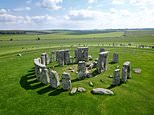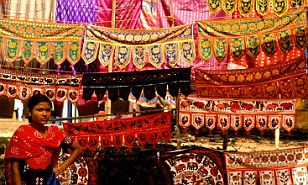Pantheon guide: How, when and why to visit Rome’s famous temple
- The Pantheon was built as a Roman temple during the reign of Emperor Hadria
- Complete with its original Roman dome, the Pantheon is now a Catholic church
- King Vittorio Emanuele II and Queen Margherita are entombed in the Pantheon
When Michelangelo first saw the Pantheon he proclaimed it was the work of angels, not humans. And it's easy to see why. One of Rome’s most iconic sights, this magnificent stone edifice is the best-preserved Roman building in the world. Built in 118 AD, this former Roman temple and now Catholic church is one of Rome’s most popular visitor attractions. Check out our short guide on how to get the best out of your visit.

View of the exterior of the Pantheon
Visiting the Pantheon
The Pantheon is a massive circular church topped by 141ft (43m) wide dome. Visitors enter through its grand portico, which has 16 granite Corinthian columns each standing nearly 39ft (12m) high. A pair of huge bronze doors opens out under the famous ornate dome. The opening at the very top of the dome is known as the oculus, or the eye of the Pantheon, and is almost 29ft (9m) in diameter. Apart from the doors, it's also the only source of light in the church. The vast marble floor, which features a geometrical design, is the original 2,000-year-old floor.
How to get there? The Pantheon overlooks Piazza della Rotunda, a beautiful cobblestone square between Via del Corso and Piazza Navona. It’s a six-minute walk from the buses on Via del Corso, while the nearest metro is Colosseum, which is a 20-minute stroll.
Opening times: The Pantheon is open to the public from 0830 to 1715 Monday to Saturday, and from 0900 to 1745 on Sundays.
Tickets: Entry into the Pantheon is free. There are several guided tours on offer, which can be booked and paid for at the visitors’ desk. These vary in prices but are worthwhile to get the most out of your visit.
Attend Mass at the Pantheon: Since the year 609 CE, the Pantheon has been a working Catholic Church and holds a regular mass. Every Saturday, the 1700 mass is celebrated in several European languages. Visitors to the services are welcome, but silence and appropriate dress is appreciated.
Getting around: Download the Pantheon app ($0.99c/£0.75p) on your smartphone for additional history and information. It includes a 30-minute audio guide available in eight different languages, which guides you around 15 different listening points. It features the same information as the audio guide available at the visitors’ desk and benefits from an interactive map.
Best time to visit: The Pantheon is very busy during the day and inside can get uncomfortably crowded. The most popular time to visit is between 1100 and 1300 when the midday sun streams through the oculus illuminating the interior. To avoid the crowds, visit either early in the morning or after 1600. Visitors can spend anything from a few minutes up to an hour inside.

Interior of Rome Pantheon with the famous dome
History of the Pantheon
The name Pantheon means to honour all gods. It was built as a Roman temple during the reign of Emperor Hadrian and dedicated to the 12 pagan gods of Rome and Greece.
It was actually the third temple built on the site, the first two were constructed under rule of Roman consul, Marcus Agrippa. Look out for the Latin inscription on the portico, which says, ‘M.AGRIPPA.L.F.COS.TERTIVM.FECIT’, which translates as 'It was built by Marcus Agrippa, son of Lucius, consul for the third time'. However, it has since been proved that it was actually built during the reign of Emperor Hadrian a decade later, who just so happened to keep Agrippa’s original inscription.
In the 7th century, the Byzantine Emperor Phocus gave the Pantheon to Pope Boniface IV who converted it into a Catholic Church, the Basilica di Santa Maria ad Martyres. The pope then had the remains of hundreds of holy martyrs moved from the catacombs to temples above the altar. Historians say this is a big part of the reason the Pantheon still stands today.
The Pantheon is also the final resting place for several famous Rome residents. King Vittorio Emanuele II, King Umberto 1 and Queen Margherita are all entombed in the Pantheon, as well as the artist, Raphael and composer, Arcangelo Corelli.
Did you know?
The Pantheon still has its original Roman dome and still, after two millennia, is the world's largest unreinforced concrete dome.
Until the 20th century, the Pantheon was the largest concrete structure in the world.
The great artist and architect Michelangelo studied the Pantheon’s magnificent dome before starting work on St. Peter's Basilica in the Vatican City.
Each of the Pantheon’s 16 granite columns weigh 60 tons and were transported to Rome all the way from Egypt.
Most watched News videos
- Scottish woman has temper tantrum at Nashville airport
- Tesla Cybertruck explodes in front of Trump hotel in Las Vegas
- Mass panic as New Orleans attacker flies down Bourbon street
- Shocking moment zookeeper is fatally mauled by lions in private zoo
- Horrific video shows aftermath of New Orleans truck 'attack'
- Meghan Markle celebrates new year in first Instagram video
- Tesla Cybertruck burns outside Trump hotel in Las Vegas
- See how truck that drove into crowd made it through police barrier
- Cheerful Melania Trump bops to YMCA at Mar-a-Lago NYE bash
- New Orleans terror attack suspect reveals background in video
- Plane passenger throws drink at flight attendant in boozy fight
- Horrifying moment yacht crashes into rocks and sinks off Mexico coast













































































































